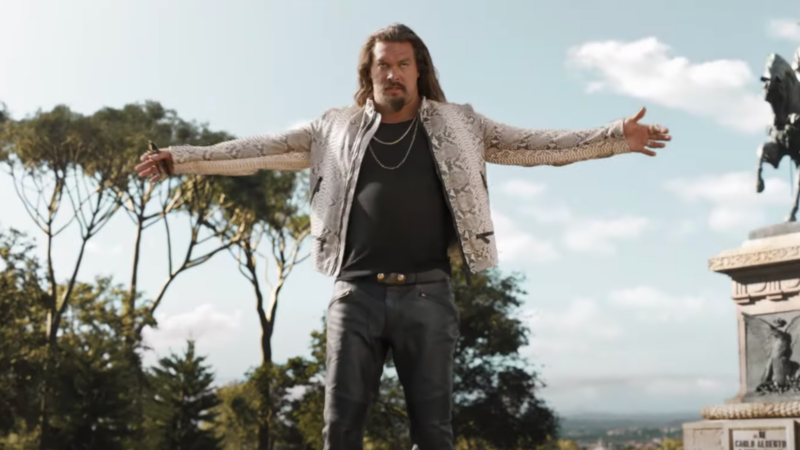The Pentagon’s “accounting error” will allow President Joe Biden to send an extra $3 billion in military aid to Ukraine without congressional approval. Was this deliberate?

When the COVID-19 pandemic shuttered theaters in early 2020, one of the first big films to be delayed was F9: The Fast Saga, the ninth entry in the Fast & Furious franchise. When that film finally hit theaters after more than a yearlong delay, it was a reminder not only of the specific delights of the superpowered street-racing franchise, but of the mindless pleasure of the big-screen cinematic experience: Here were tricked-out cars that defiantly refused to obey physics, and mammoth dudes with necks and biceps that seemed to do the same. The movie’s dialogue consisted of an impenetrable technobabble, goofy comic sidebars, growled threats, and Zen koans for morons about the meaning of family. The movie was silly, sentimental, soapy, and downright ludicrous. And after a year of watching small movies on small screens, seeing it on a giant screen with an unruly crowd was also kind of a blast.
Two years later, the follow-up Fast X offers something of the reverse experience: It’s overblown, overdirected, overlong, and mostly just overkill—a painful reminder of what a slog a bloated Hollywood sequel can be.
The joy of the Fast & Furious franchise can be traced not only to its physics-denying, cartoonlike depiction of muscle cars that can leap, flip, and fly at the will of their drivers, but also the earnest-bordering-on-hokey straight-facedness with which the action is presented. The movies were self-aware, yes, and often knowingly silly, but they also took both their super-car antics and their macho bravado seriously. The movies might have been jokes, but they didn’t act that way.
Much of the franchise’s tone and tenor can be attributed to director Justin Lin, who helped reimagine the series, which began as a mid-budget street-racing ripoff of the surf-crime movie Point Break—in terms of plot structure, they’re almost exactly the same movie—into something far grander. Lin gifted the franchise’s hot rods with superpowers, and expanded the series’ ambitions, elevating it into a sort of spy-heist series more along the lines of Mission: Impossible and James Bond than, say, Biker Boyz.
Lin directed the fourth, fifth, sixth, and ninth episodes of the series, and was set to direct Fast X as well. But after reportedly clashing with star Vin Diesel, he left the director’s chair, handing it off to director Louis Leterrier of the Transporter films.
Lin’s films were light, fun, and almost sweet at times: Leterrier, in contrast, seems intent on pounding viewers into submission. The action scenes are louder and noisier, but lack the spark of wit and exuberance that defines the series’ best. The comic antics are more forced, less funny. The earnest yet harmless macho bravado that defined the characters has been replaced with something both more brooding and more glaringly self-aware. Lin’s Fast films projected a kind of childlike innocence and a toybox glee. Fast X, in contrast, is a movie that’s in on the joke of the Fast & Furious franchise, much to its detriment.
That’s especially true with regard to Jason Momoa’s scenery-chewing performance as the villain, Dante Reyes, the son of Hernan Reyes, the deposed drug lord from the fifth installment. Momoa clearly enjoyed himself in the role, and his appearances inevitably enliven this otherwise mediocre movie. But Momoa’s decision to lean into the character’s wink-wink absurdity is reflective of the film’s fundamental problem: It plays more like an overstuffed parody of the Fast & Furious franchise than any of Lin’s light-footed entries.
Fast X is ugly, thundering, pseudo-camp, almost to the level of Joel Schumacher’s 1990s entries in the Batman franchise, but without the deconstructive, countercultural glee.
It doesn’t help that the cinematic fundamentals are weak: The returning characters don’t have much to do, and the new faces, including Alan Ritchson as a comically overmuscled spy-agency operative and Brie Larson as the daughter of Kurt Russell’s Mr. Nobody, don’t make much of an impact. Despite a reported $350 million budget, the action sequences are leaden with third-rate CGI: The story supposedly takes place in locales all over the world. But so many of the environments are so clearly computer-generated that it looks more like it was shot entirely in front of a green screen.
Early in the movie, Momoa’s villain character declares his intention not only to kill but to cause suffering. In theory, he was talking about the series’ protagonists, but after sitting through this raging bore, I couldn’t help but wonder whether he meant the audience instead.
The post <i>Fast X</i> Is a Loud, Obnoxious, Campy Bore appeared first on Reason.com.

















